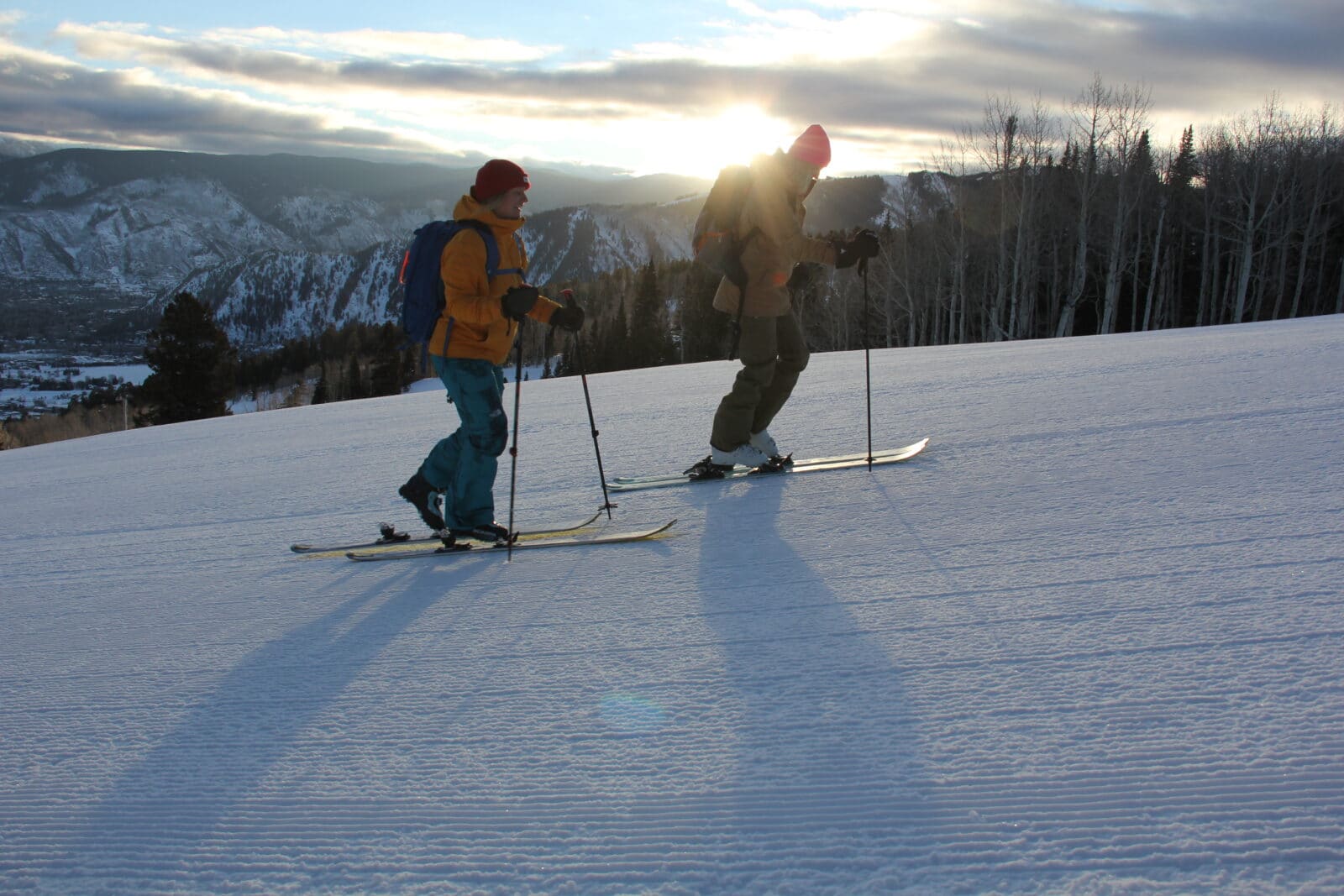Resort Skinning 101: How to Enjoy Uphill Access at Ski Resorts
You don’t have to ride lifts to ski inbounds these days. While getting deep in the backcountry is what many of us dream of, resort skinning is a great place to prepare for those big adventures, a safe place to get some quick exercise, dial in gear, and get some laps in when the lifts are closed.
Resort skinning is one of the fastest growing segments of the ski industry, and many ski areas are working hard to accommodate the rapidly growing interest in uphill skiing with designated uphill routes that allow skiers to safely travel up the mountain.
If you’re a skier or splitboarder interested in resort skinning, here’s a rundown of everything you need to know to earn your turns inbounds.
Try onX Backcountry today for 7 days.
Why ski uphill at the resort?
Resort skinning has seen a huge explosion in popularity in the last few years, especially since 2020 when many skiers and riders turned to resort skinning after COVID-19 shut down the lifts. Because of that, many resorts have developed uphill policies and designated routes to manage the influx of folks looking to skin at their local hill.
For those who work 9 to 5, resort skinning is a great way to get on skis before or after work when lifts usually aren’t spinning. It’s also a great way to get in some ski touring without having to worry about traveling in avalanche terrain. Since you’re skiing inbounds, you can also ski without a partner which makes it easy to squeeze into busy schedules. In places like Jackson, an hour-long lunch break is enough time to squeeze in a lap at Snow King Mountain.
For those newer to backcountry skiing, resort skinning is a great way to dial in your backcountry skills. It’s a safe place to practice skinning technique, build fitness, and get familiar with your gear before you head out into the backcountry.
Gear Up
Resort skinning requires you to carry a little less gear than backcountry skiing. You’ll want to use most of the same gear you use in the backcountry, however you usually don’t need to carry avalanche safety equipment. It’s up to you if you’d rather carry a full pack to get used to the weight you’ll be carrying in the backcountry, or if you want to go light and fast. If your touring bindings don’t have brakes, resorts require you to add leashes for safety in case you lose a ski.
If you’re planning a pre-dawn skin or an evening adventure, be sure to pack a bright headlamp for the way down and wear reflective colors. Some resorts ask that you wear a blinking tail light to stay visible for machinery.
Pro tip: pack a hot thermos of tea for a chilly nighttime lap to enjoy at the summit.

Uphill Travel Policies
Unfortunately there’s no one-size-fits-all policy for resort skinning. Every resort has their own set of uphill travel rules, so you’ll have to do some research for the specific resort you plan to skin up. Some resorts, like Snowmass and Aspen Highlands, allow uphill travel in designated routes during operating hours, while others, like Sun Valley Resort, only allow uphill travel outside of resort operating hours. A few resorts, like Jackson Hole Mountain Resort, prohibit any kind of uphill travel.
Be prepared to stick to the resort’s uphill route since it’s usually designed to keep uphill skiers from getting in the way of downhill traffic, as well as avoiding grooming machinery at night and early in the morning. Uphill routes often connect various cattracks and low-angle slopes, so sticking to these routes usually ensures easy traveling compared to trying to crawl up a steep and icy groomer. onX Backcountry can help you navigate the resort and plan your uphill route.
More and more resorts are charging for uphill access these days, so it’s likely you’ll need a pass for uphill travel. Check your local resort’s website to find out before heading out. Some resorts allow dogs outside of operating hours, which should be included in the resort’s stated policy.
Resort skinning is a great activity to incorporate into your routine, but remember that just because you’re not skiing in the backcountry doesn’t mean there are no risks. Travel with caution, especially when skiing at night, and add your resort’s ski patrol phone number to your contacts in case of emergency.